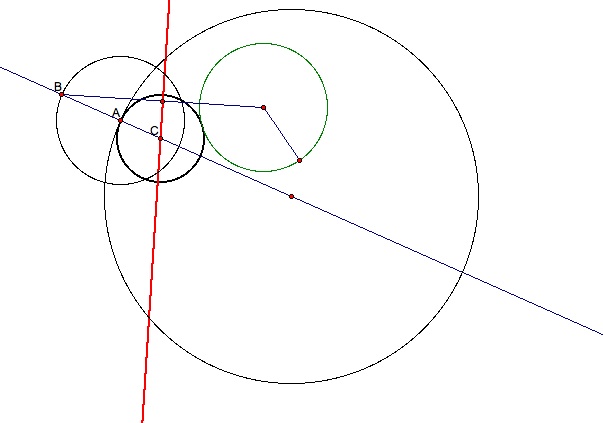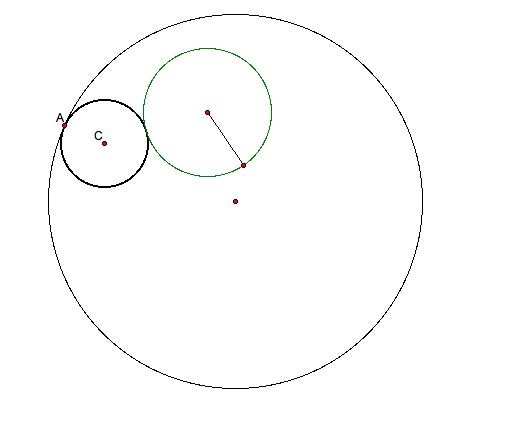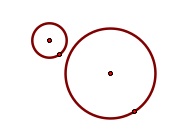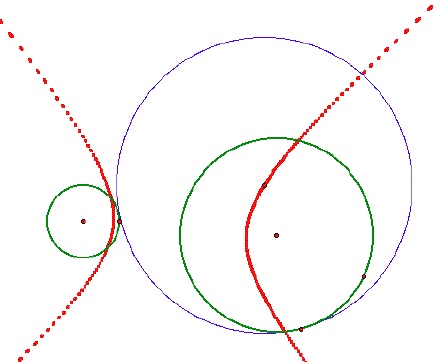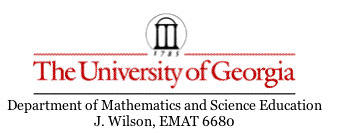

# 7 LOOKING AT TANGENT CIRCLES
My first step was creating a script for the tangent circle.
Now let's explore what happens with tangent circles:
To create a tangent circle internal to a given circle these are the steps that I executed:
STEP 1 - Construct two circles with one that is inside the other. Then construct a line through an arbitrary point (we'll call point A) on the large circle and the center of the given circle.
STEP 2 - Construct a circle with the point A being the center and the radius equal to the radius of the smaller circle.
STEP 3 - Construct a point (we'll call point B) where the new circle intersects the line internal to the large given circle.
STEP 4 - Construct a line segment from the center of the small given circle to point B. Then take the midpoint of this segment and construct the perpendicular bisector of the segment.
STEP 5 - The point (we'll call point C) where the perpendicular bisector intersects the line drawn through point A is the center of the circle tangent to both circles where the smaller circle is external to the tangent circle.
STEP 6 - Constructing the circle through point A with point C being the center gives you your tangent circle
This is what the construction looks like with all the construction lines present.
